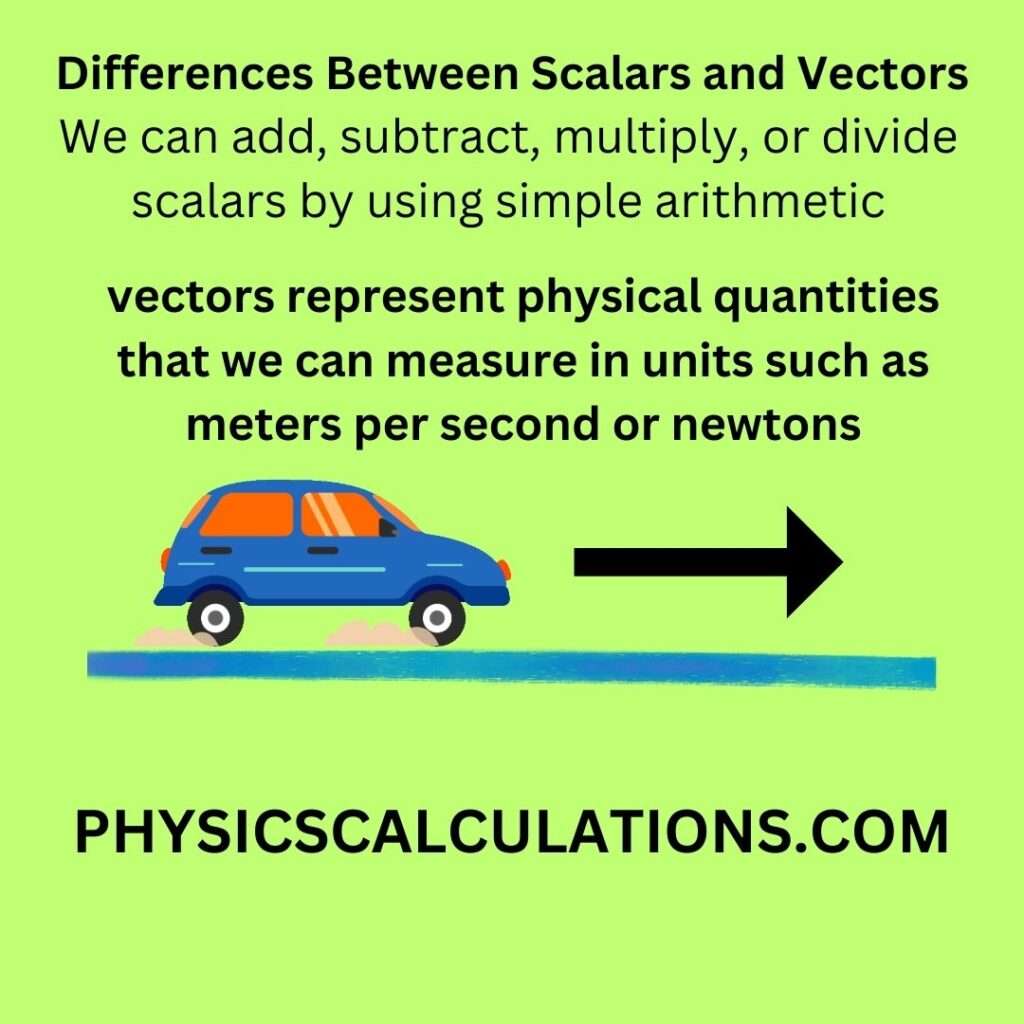Table of Differences Between Scalars and Vectors
Here is a concise table listing the key differences between scalars and vectors:
| Property | Scalars | Vectors |
|---|---|---|
| Definition | Quantities with only | Quantities with both magnitude |
| magnitude and no | and direction. | |
| specific direction. | ||
| Representation | Single numerical value | Arrow with magnitude and |
| with a unit. | specified direction. | |
| Examples | Mass (5 kg), Time (10 s), | Displacement (10 m east), |
| Temperature (30°C) | Velocity (20 m/s north), | |
| Force (50 N right). | ||
| Mathematical | Mathematical operations | Mathematical operations |
| Operations | treated as ordinary | involve vector addition, |
| numbers. | subtraction, and components. | |
| Direction | No specific direction. | Specific direction is crucial. |
| Resultant | No resultant vector; | Resultant vector is formed by |
| quantities simply add up | vector addition, considering | |
| numerically. | both magnitude and direction. |
This table provides a clear overview of the main distinctions between scalars and vectors, emphasizing their definitions, representations, examples, mathematical operations, and the role of direction.

Scalars: Definition and Examples
A scalar is a physical quantity that has magnitude but no direction. In other words, we can solely describe scalar quantities by their size or magnitude. Some common examples of scalars include time, mass, speed, temperature, and distance.
One of the defining characteristics of a scalar is that you can add, subtract, multiply, or divide it by other scalars using simple arithmetic. For instance, if you have a scalar quantity of 10 meters and add another scalar quantity of 5 metres to it. You will end up with a scalar quantity of 15 metres.
Vectors: Definition and Examples
Unlike scalars, vectors are quantities that have both magnitude and direction. We describe vectors as quantities that require both a magnitude and a direction. Some common examples of vectors include velocity, force, displacement, and acceleration.
One of the defining characteristics of a vector is that it cannot be added, subtracted, multiplied, or divided in the same way as a scalar. Instead, we can only manipulate vectors by using vector algebra, which takes into account both their magnitude and direction.
Key Differences Between Scalars and Vectors
Now that we’ve defined scalars and vectors let’s explore their key differences:
Magnitude: Scalars have magnitude only, while vectors have both magnitude and direction.
Arithmetic Operations: We can add, subtract, multiply, or divide scalars by using simple arithmetic. While vectors involve using vector algebra.
Representation: We represent scalars by a single number. While we require both magnitude and direction to fully describe vectors..
Physical Quantity: Scalars represent physical quantities that we can measure in LTM units (Length, Time, and Mass). These units include meters, seconds, or kilograms. While vectors represent physical quantities that we can measure in units such as meters per second, newtons, or meters per second squared.
You may also like to read:
Vectors and Scalars: Key Differences and Applications